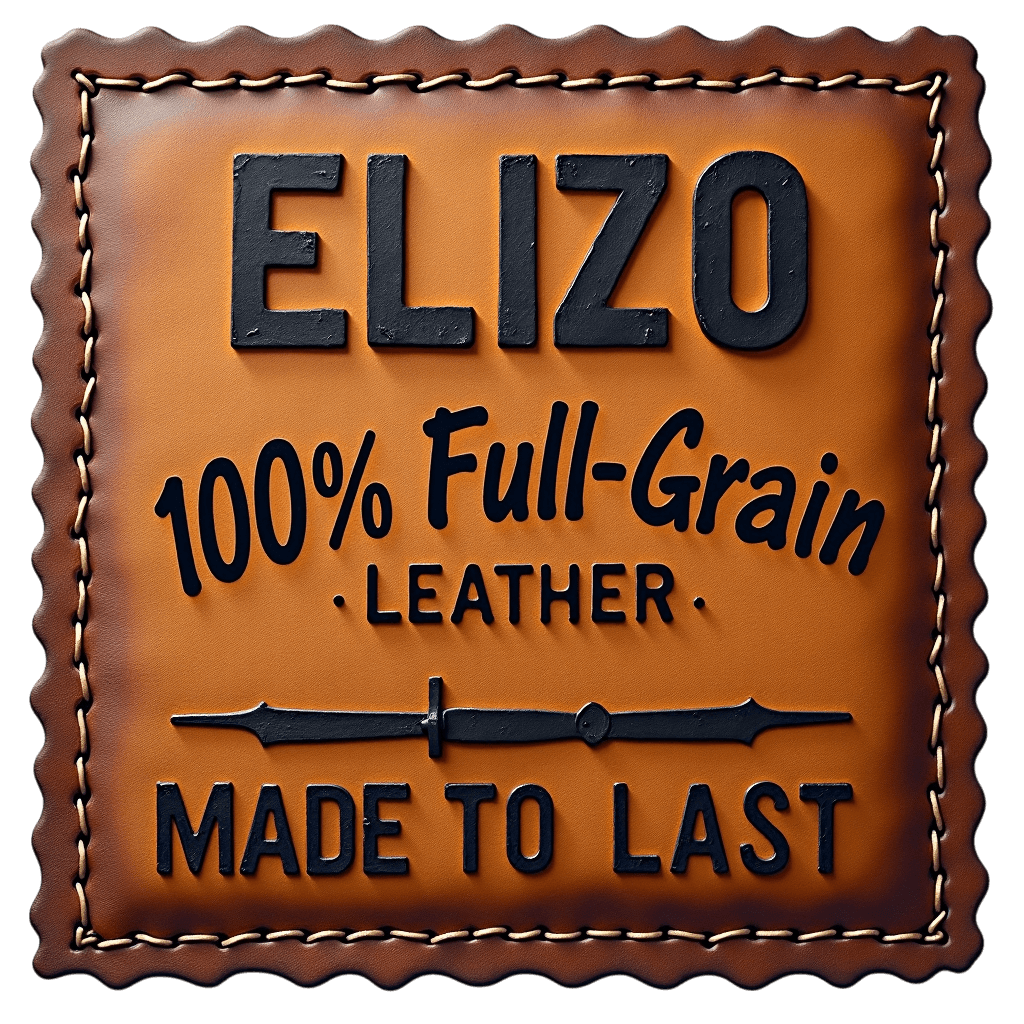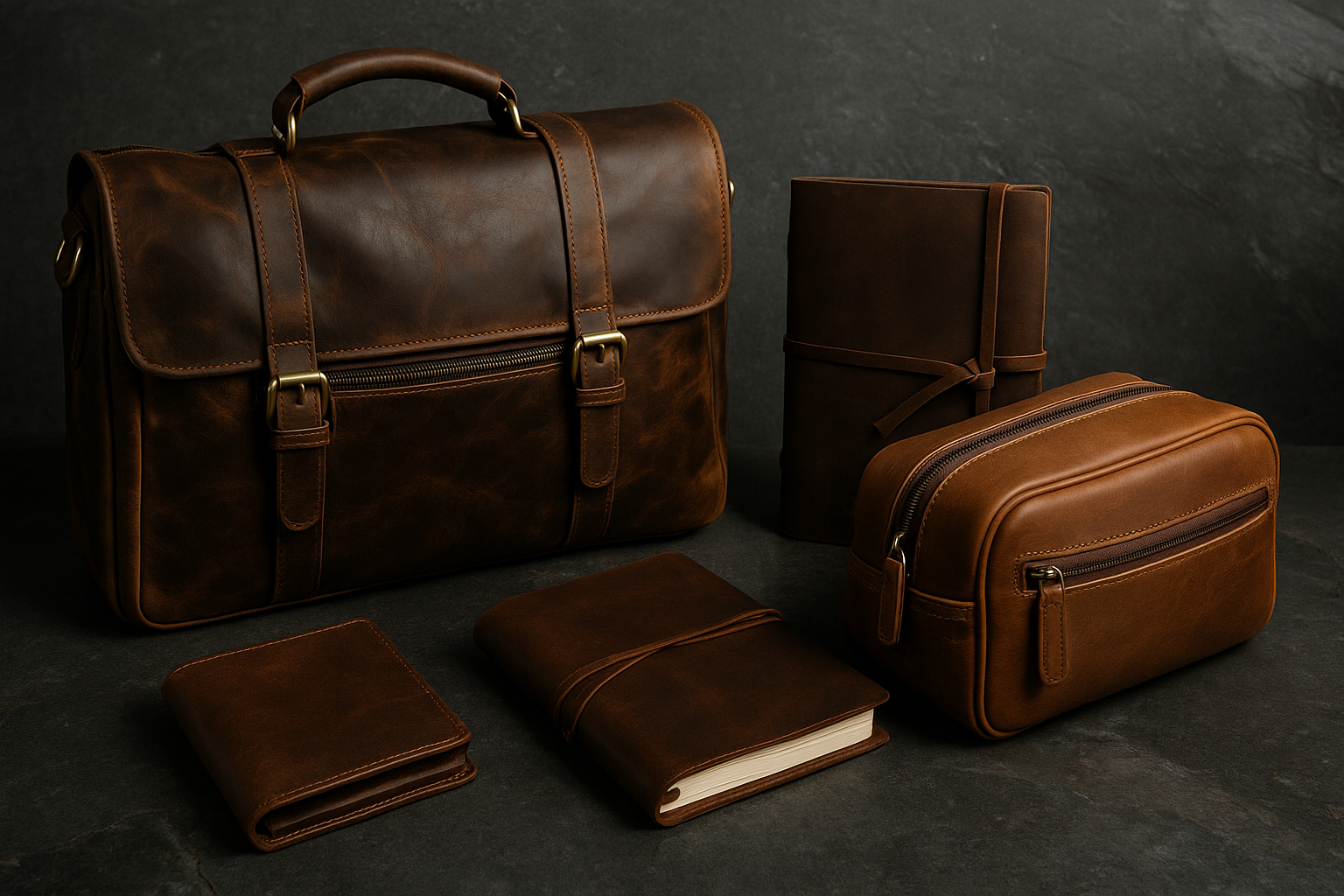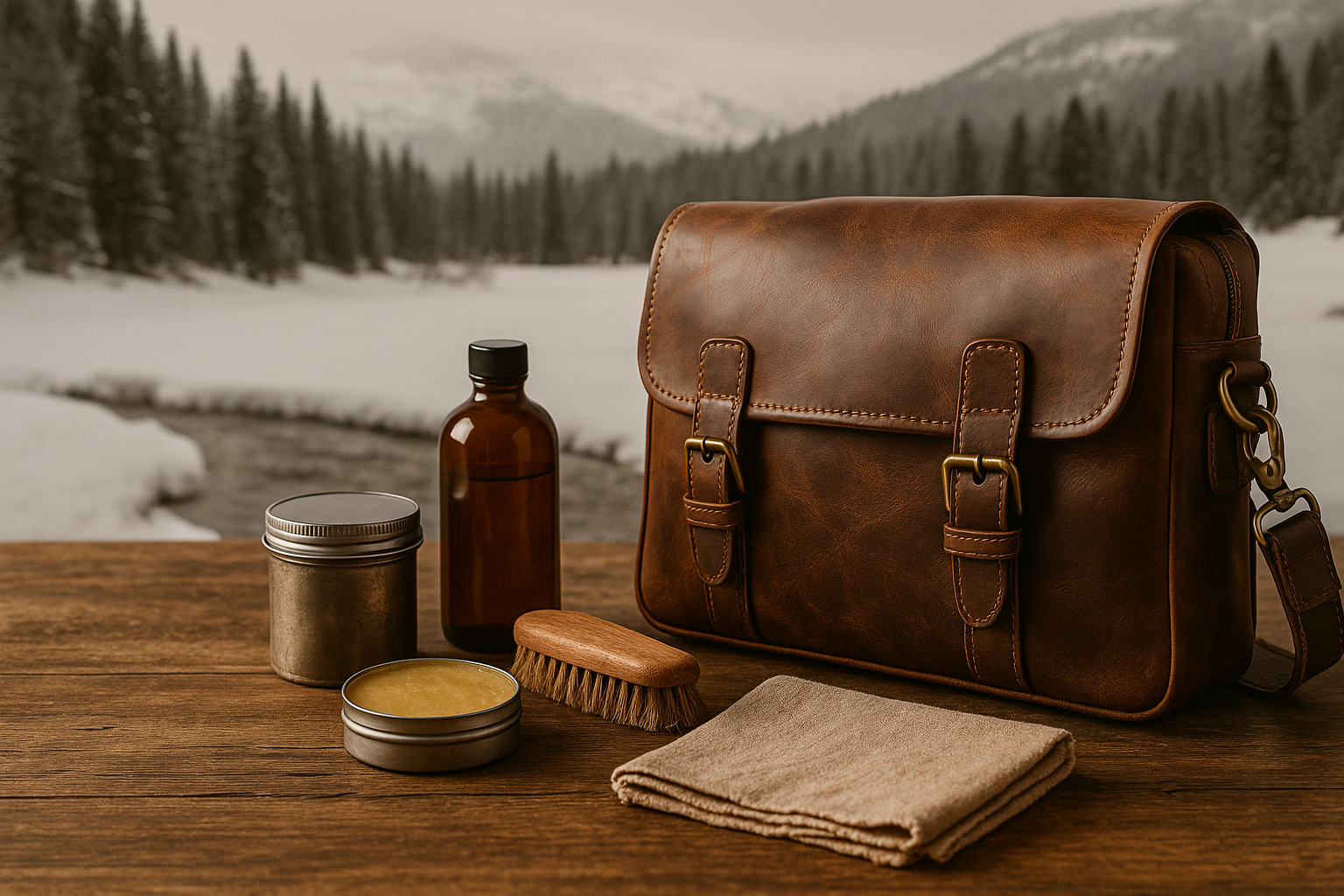
Traveling with Leather: Essential Care Tips for Business and Leisure Travel

Travel presents unique challenges for leather goods, exposing them to temperature fluctuations, humidity changes, rough handling, and environmental stresses that don't exist in controlled home or office environments. Whether you're carrying a leather briefcase through airport security or packing a leather duffle bag for an extended vacation, understanding how to protect and maintain your leather during travel ensures these investments continue serving you beautifully for years to come.
The key to successful leather travel lies in preparation, protection, and post-travel care. By understanding how different travel conditions affect leather and implementing strategic protective measures, you can maintain your leather goods' appearance and functionality regardless of destination or travel duration.
Understanding Travel-Related Leather Risks
Travel exposes leather to environmental stresses and physical challenges that can cause immediate damage or accelerate long-term wear. Recognizing these risks allows for proactive protection strategies that preserve your leather's beauty and structural integrity.
Climate and Environmental Challenges
Air travel subjects leather to extreme environmental variations within short timeframes. Airplane cabins maintain low humidity levels that can dry leather rapidly, while destination climates might introduce moisture, salt air, or temperature extremes that stress leather fibers.
Ground transportation adds additional environmental challenges, from air-conditioned vehicles to outdoor exposure during loading and transit. A leather messenger bag might experience freezing temperatures during cargo loading, then tropical heat upon arrival, creating expansion and contraction stress that can cause cracking or warping.
Physical Handling Stress
Travel inherently involves more rough handling than typical daily use. Baggage handlers, security screenings, overhead compartment storage, and general travel chaos subject leather goods to impacts, pressure, and abrasion that can damage surfaces, hardware, and structural elements.
Even careful travelers face unavoidable physical stresses during transit. Crowded airports, tight airplane seats, and constant movement create friction and pressure that can scuff surfaces or stress seams on leather wallets and other accessories carried in pockets or bags.
Pre-Travel Preparation Strategies
Successful leather travel begins before departure with comprehensive preparation that addresses both protective needs and functional requirements. Proper preparation prevents most travel-related leather damage while ensuring your pieces perform optimally throughout your journey.
Comprehensive Cleaning and Conditioning
Clean and condition all leather items before travel to ensure they're in optimal condition to handle environmental stresses. Well-conditioned leather resists moisture damage and temperature-related cracking while maintaining flexibility during handling and use.
Pay special attention to stress points like corners on portfolios, handles on bags, and fold lines on wallets. These areas experience the most stress during travel and benefit from extra conditioning to prevent cracking or tearing under pressure.
Allow conditioning products to fully absorb before packing, ensuring leather doesn't transfer oils to clothing or other items during travel. This absorption period also allows leather to reach optimal flexibility and moisture content for travel conditions.
Protective Product Application
Apply leather protector sprays or waterproofing treatments appropriate for your specific leather type and travel destination. Beach destinations might require enhanced water resistance, while urban travel might call for general protection against pollutants and handling.
Test protective products on inconspicuous areas before applying to entire pieces, especially for colored or specialty leathers that might react unexpectedly to protective treatments. Allow protection products to cure completely before packing to ensure maximum effectiveness.
Strategic Packing for Leather Protection
How you pack leather items significantly impacts their condition upon arrival and throughout your travel period. Strategic packing protects against physical damage while maintaining shape and preventing environmental damage from other luggage contents.
Shape Preservation Techniques
Maintain the natural shape of leather bags and accessories during packing to prevent permanent deformation. Stuff leather tote bags and briefcases with soft materials like bubble wrap or tissue paper to maintain structure while providing cushioning against external pressure.
For leather toiletry bags and smaller accessories, use internal organization to maintain shape while maximizing space efficiency. Rolled towels, clothing, or dedicated packing cubes can provide structural support while serving dual purposes in your luggage organization system.
Avoid overpacking leather bags beyond their design capacity, as this can stress seams, distort shape, and cause permanent damage to structural elements. Distribute weight evenly and respect the bag's intended load limits to ensure longevity.
Environmental Isolation
Protect leather from moisture, chemicals, and temperature extremes by creating environmental barriers within your luggage. Use dust bags, plastic covers, or dedicated protective pouches to isolate leather items from potentially damaging materials.
Keep leather goods away from liquids, cosmetics, and cleaning products that could leak during travel. Even small spills can cause permanent staining or chemical damage that's difficult or impossible to repair after the fact.
Consider packing leather items in carry-on luggage when possible to maintain better environmental control and reduce handling stress. Cabin environments, while dry, offer more stable conditions than cargo holds where temperature and pressure variations can be extreme.
In-Transit Care and Monitoring
Active care during travel helps identify and address potential issues before they become permanent problems. Regular monitoring and basic maintenance can prevent minor stresses from developing into significant damage.
Regular Inspection Routines
Develop habits of inspecting leather items during travel stops, hotel arrivals, and daily use periods. Look for new scuffs, moisture exposure, or signs of stress that might require immediate attention.
Pay particular attention to hardware function, zipper operation, and strap attachment points that experience high stress during travel. Early identification of developing problems allows for preventive action before complete failure occurs.
Document any damage with photos for insurance or warranty purposes, especially for valuable pieces or damage that occurs during commercial transportation where liability might apply.
Environmental Adaptation
Help leather adapt gradually to new environmental conditions by avoiding extreme exposure changes when possible. Allow leather items to adjust to room temperature before opening or using them after exposure to cargo holds or vehicle storage.
In humid destinations, provide opportunities for leather to air out and dry naturally. Avoid sealing leather items in closed containers where moisture can accumulate and cause mold or mildew development.
For dry climates, monitor leather for signs of excessive drying and apply emergency conditioning if available. Travel-sized leather care products can provide essential maintenance during extended trips to challenging environments.
Destination-Specific Care Strategies
Different destinations present unique challenges that require adapted care strategies. Understanding environmental conditions and cultural factors helps develop appropriate protection and maintenance approaches for specific travel contexts.
Tropical and Humid Environments
High humidity environments present significant challenges for leather goods, promoting mold growth while softening leather structure. Increase ventilation opportunities and reduce enclosed storage time to prevent moisture-related damage.
Use silica gel packets or other desiccants in storage areas to control humidity around leather items. Monitor for signs of mold or mildew development, addressing any issues immediately with appropriate cleaning and drying procedures.
Consider the impact of frequent temperature transitions between air-conditioned interiors and humid exteriors, which can cause condensation formation on and within leather goods. Allow gradual temperature adjustment when moving between extreme environments.
Arid and Desert Conditions
Extremely dry environments can rapidly remove natural oils from leather, leading to cracking and structural damage. Increase conditioning frequency and monitor leather for signs of excessive drying throughout your stay.
Protect leather from direct sun exposure, which can cause fading and accelerated drying. Use protective covers or store items in shaded areas when not in active use.
Sand and dust in arid environments can accumulate in leather texture and hardware, requiring more frequent cleaning to prevent abrasive damage. Use soft brushes to remove particulates before they can work into leather grain or damage moving parts.
Urban and Polluted Environments
City travel exposes leather to pollutants, chemicals, and environmental contaminants that can stain or damage surfaces. Increase cleaning frequency and consider protective barriers for valuable or light-colored leather items.
Public transportation and urban crowding increase contact with potentially staining substances and rough surfaces. Monitor high-contact areas more carefully and clean promptly to prevent permanent damage.
Urban environments often combine multiple stresses—pollution, handling, weather variations, and chemical exposure—requiring comprehensive protection strategies rather than single-focus approaches.
Business Travel Considerations
Business travel presents specific requirements for leather care that balance professional appearance demands with practical travel constraints. Maintaining professional presentation while protecting valuable leather accessories requires strategic planning and execution.
Professional Presentation Priorities
Business leather goods must maintain pristine appearance throughout travel to support professional credibility. This requirement often conflicts with optimal protective practices, requiring creative solutions that balance presentation with preservation.
A leather briefcase used for important client meetings needs immediate availability and perfect appearance, even after challenging travel conditions. Develop quick cleaning and presentation routines that restore professional appearance rapidly upon arrival.
Consider backup options for critical business accessories, allowing for protective transport of primary pieces while maintaining functional alternatives for immediate business needs upon arrival.
Multi-Destination Challenges
Extended business travel often involves multiple destinations with varying environmental conditions and duration constraints. Develop flexible care routines that adapt to changing conditions while maintaining consistent protection levels.
Pack essential leather care supplies in quantities appropriate for trip duration and destination challenges. Basic cleaning cloths, emergency conditioning products, and protective sprays can prevent minor issues from becoming major problems during extended travel.
Plan for laundry and cleaning opportunities during extended trips, ensuring leather items receive proper care and maintenance rather than accumulating damage throughout multiple destinations.
Adventure and Outdoor Travel
Outdoor and adventure travel subjects leather to extreme conditions that can cause rapid damage without proper preparation and protection. Understanding these unique challenges helps develop effective strategies for maintaining leather during challenging outdoor activities.
Weather Protection Strategies
Outdoor activities expose leather to rain, snow, mud, and other environmental elements that can cause immediate and long-term damage. Waterproofing treatments become essential rather than optional for adventure travel applications.
Consider the specific weather conditions expected during your adventure travel and prepare accordingly. Mountain environments might require cold-weather protection, while water activities need comprehensive moisture protection for leather toiletry bags and other accessories.
Pack emergency care supplies appropriate for outdoor conditions, including waterproofing renewal products, emergency cleaning supplies, and basic repair materials for field maintenance.
Activity-Specific Adaptations
Different outdoor activities present unique challenges for leather care. Hiking might involve dust and abrasion, while water activities introduce moisture and salt exposure that requires immediate post-activity attention.
Develop activity-specific protection and care routines that address the particular stresses of your planned activities. Rock climbing might require abrasion protection, while beach activities need comprehensive moisture and salt protection.
Consider alternative storage and transport options for valuable leather items during high-risk activities, using protective cases or alternative materials when leather isn't appropriate for specific conditions.
Emergency Care and Damage Control
Despite careful preparation, travel emergencies can expose leather to damaging conditions requiring immediate response to prevent permanent damage. Understanding emergency care techniques can save valuable leather items when professional care isn't available.
Water Damage Response
Immediate response to water exposure can prevent permanent damage and expensive restoration requirements. Blot excess moisture immediately without rubbing, which can spread damage or work moisture deeper into leather fibers.
Allow gradual drying in ventilated areas away from direct heat sources that can cause cracking or shrinkage. Stuff wet bags with absorbent materials to maintain shape while promoting moisture removal from internal surfaces.
Apply emergency conditioning once leather reaches appropriate moisture levels to prevent cracking during the drying process. Even basic hand lotions can provide temporary protection if proper leather conditioners aren't available.
Stain and Chemical Exposure
Quick response to stains and chemical exposure can prevent permanent damage that becomes impossible to address once set. Identify the contaminating substance if possible and use appropriate emergency cleaning techniques.
For unknown substances, use gentle blotting with clean water to remove surface contamination without spreading damage. Avoid harsh cleaning products or aggressive scrubbing that might cause additional damage.
Document damage immediately for insurance or warranty claims, especially if exposure occurred during commercial transportation or accommodation provider negligence.
Post-Travel Recovery and Maintenance
Proper post-travel care helps leather recover from travel stresses while identifying any damage that requires professional attention. Comprehensive post-travel routines restore leather condition and prevent minor issues from developing into major problems.
Comprehensive Inspection and Assessment
Conduct thorough inspections of all leather items immediately upon return to identify any damage or wear that occurred during travel. Early identification allows for prompt treatment while damage remains manageable.
Pay special attention to stress points, hardware function, and areas that experienced particular exposure during travel. Document any new damage for reference and potential warranty or insurance claims.
Compare post-travel condition to pre-travel documentation to accurately assess travel impact and refine future protection strategies based on observed results.
Recovery Conditioning and Treatment
Provide comprehensive conditioning and care to help leather recover from travel stresses and environmental exposure. Focus on areas that showed signs of stress or exposure during your assessment.
Allow leather items to return to room temperature and humidity gradually before applying conditioning treatments. Rapid environmental changes can prevent proper product absorption and effectiveness.
Consider professional cleaning or restoration for valuable items that experienced significant stress or damage during travel. Early professional intervention often costs less than delayed restoration of deteriorated conditions.
Building Travel-Ready Leather Collections
Developing a collection of leather goods specifically chosen for travel requirements ensures optimal performance while protecting more delicate pieces from travel stresses. Strategic collection building balances functionality with durability for different travel contexts.
Durability vs. Luxury Balance
Choose travel leather goods that balance durability requirements with professional or personal presentation needs. Full-grain leather pieces often provide the best combination of durability and aging characteristics for frequent travel use.
Consider designating specific leather items for travel use, allowing them to develop appropriate patina and character while protecting more delicate pieces for special occasions and controlled environments.
Develop replacement strategies for travel pieces that will eventually wear out from frequent use and environmental exposure, ensuring continuity in your travel organization and presentation systems.
Versatility and Adaptability
Choose leather pieces that adapt to multiple travel contexts and requirements rather than highly specialized items that serve limited functions. A versatile messenger bag might serve business, casual, and adventure travel needs with appropriate packing strategies.
Consider modular organization systems that adapt to different trip types and durations while maintaining consistent care requirements. This approach simplifies maintenance while maximizing functionality across travel contexts.
Plan for different travel intensities and durations, ensuring you have appropriate leather options for everything from weekend getaways to extended international business travel.
Technology Integration for Travel Care
Modern technology offers tools that can enhance leather care during travel, from environmental monitoring to care reminders and emergency resources. Strategic technology use complements traditional care approaches without replacing fundamental leather knowledge.
Environmental Monitoring
Use smartphone apps or portable devices to monitor environmental conditions that might affect leather goods during travel. Understanding temperature, humidity, and other environmental factors helps optimize care timing and techniques.
Document travel conditions and leather performance for future reference, building personal databases that inform protection strategies for similar future travel contexts.
Share environmental data with accommodation providers when extreme conditions might require special storage or care arrangements for valuable leather items.
Care Documentation and Reminders
Use digital tools to maintain care schedules and document leather condition throughout travel periods. Regular documentation helps identify developing issues while providing evidence for warranty or insurance purposes.
Set care reminders appropriate for travel duration and environmental conditions, ensuring consistent maintenance even during busy travel schedules.
Maintain digital records of leather care products, techniques, and results to inform future travel preparation and care strategies.
Conclusion: Mastering Leather Travel Care
Successfully traveling with leather requires balancing protection with practicality, understanding environmental challenges while maintaining functional requirements. Quality leather travel accessories reward careful preparation and maintenance with years of reliable service and increasing beauty through accumulated patina and character.
Remember that travel care represents an extension of daily leather maintenance rather than a completely different approach. The fundamental principles remain consistent—clean regularly, condition appropriately, protect from extremes, and address issues promptly—while adapting to travel-specific challenges and constraints.
Develop travel care routines that become automatic, ensuring consistent protection regardless of destination stress or schedule pressures. Your leather accessories will reward this attention with dependable performance and professional presentation throughout your travels.
Start with basic protection strategies and refine your approach based on experience with different travel contexts and leather performance. The investment in proper travel care pays dividends in extended leather life, maintained appearance, and reliable functionality when you need it most. Whether carrying a wallet through daily commutes or managing a duffle bag through international adventures, proper care ensures your leather companions serve you beautifully wherever your travels take you.




